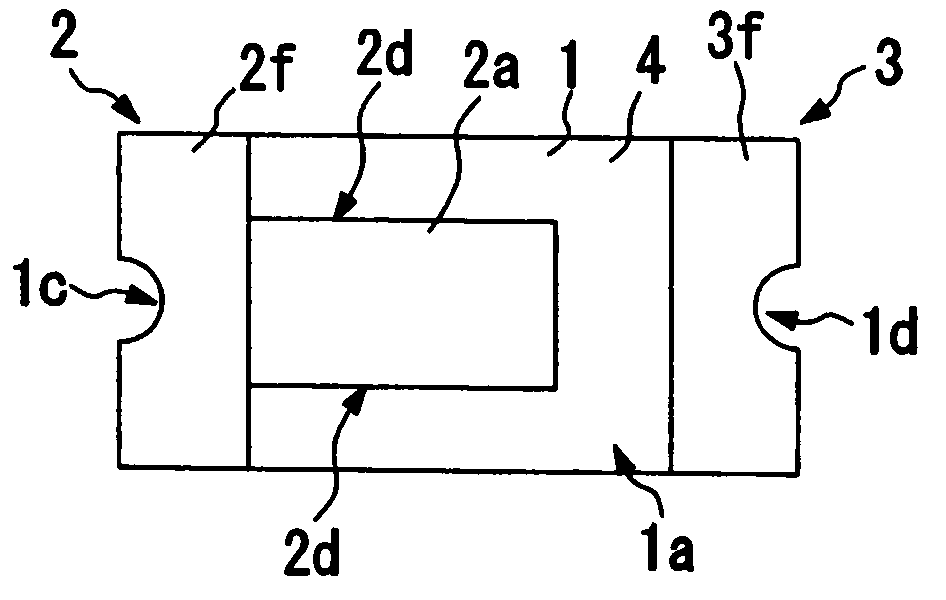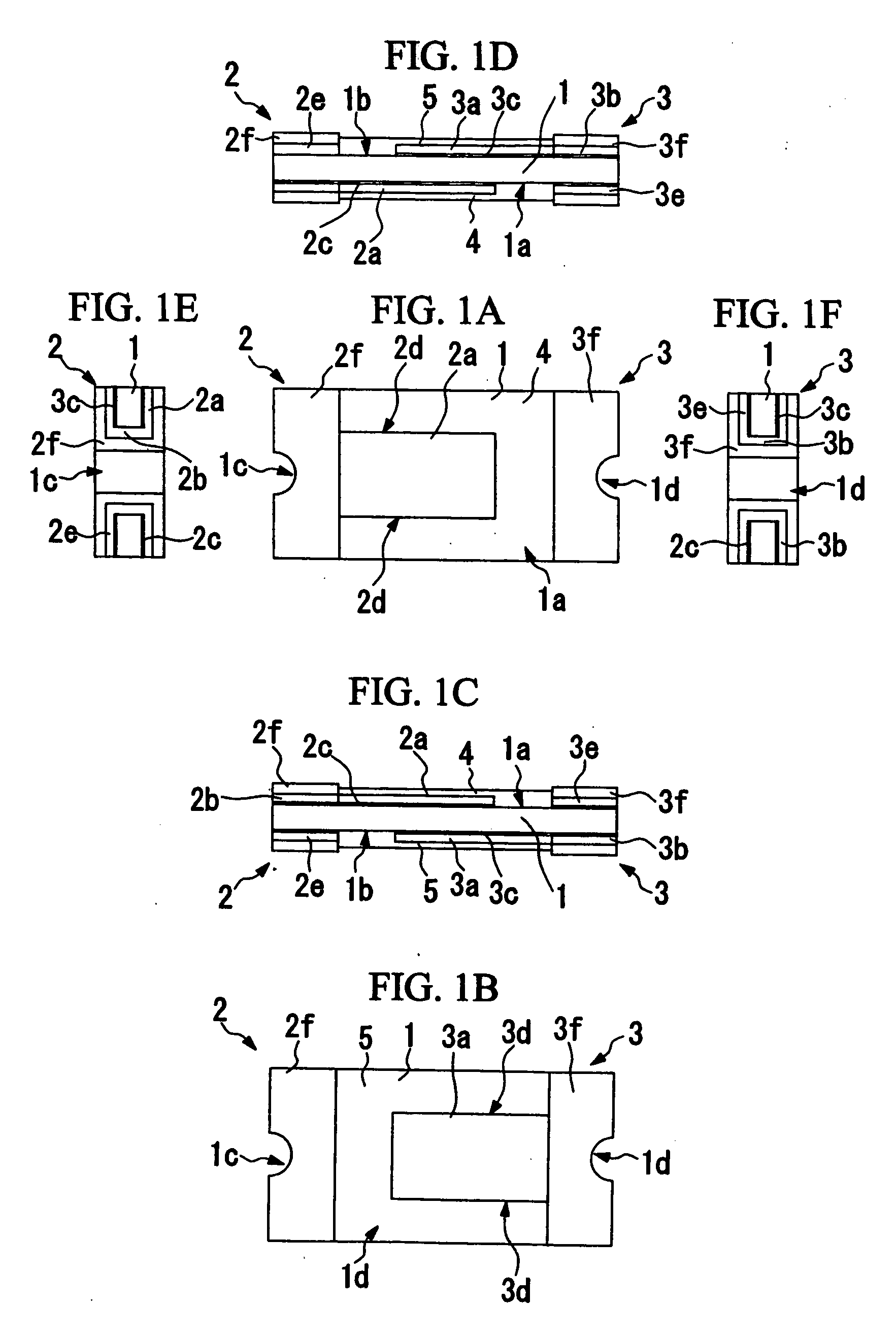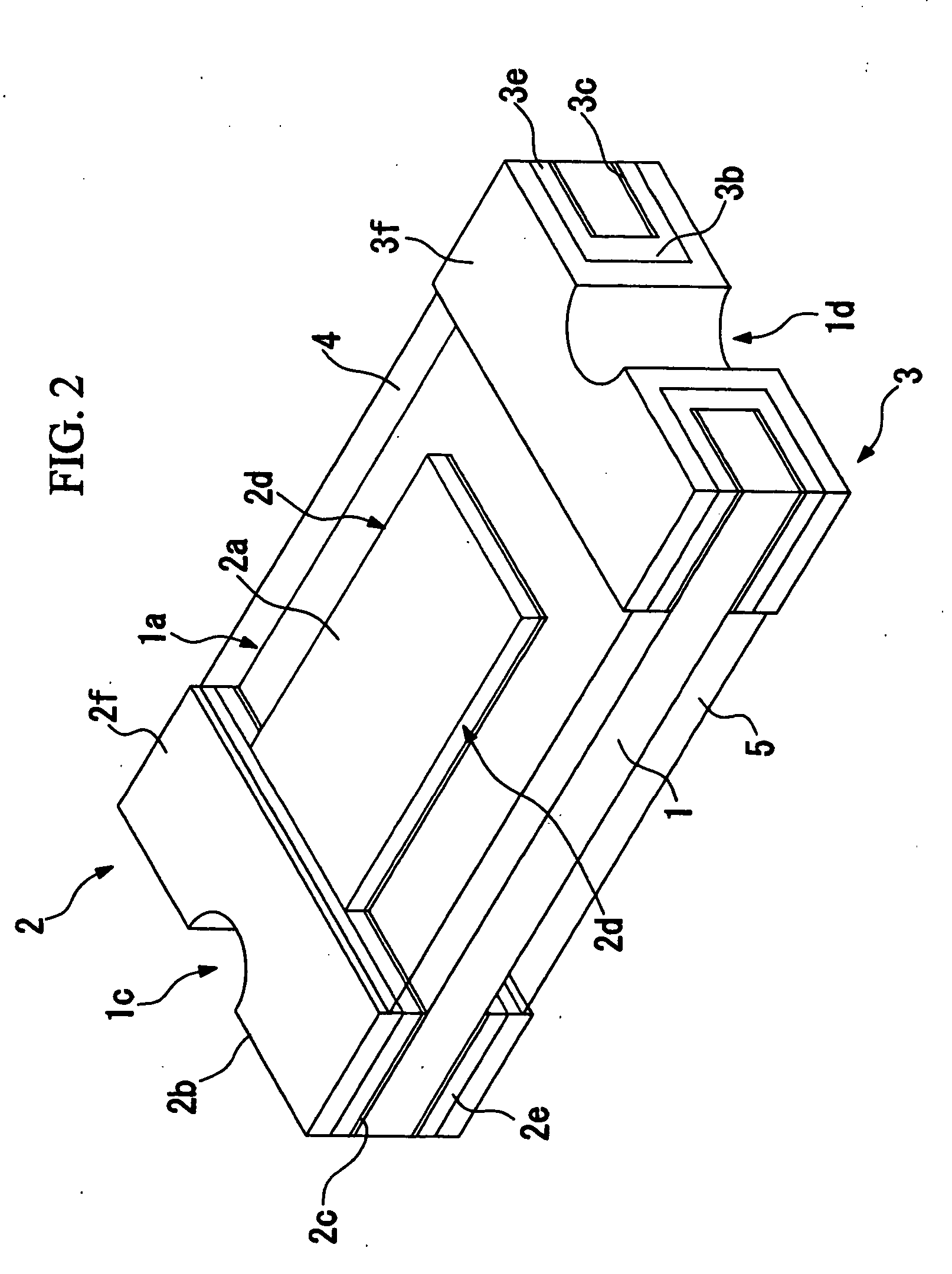Polymer ptc thermistor and temperature sensor
a thermistor and polymer technology, applied in the direction of positive temperature coefficient thermistors, instruments, heat measurement, etc., can solve the problems of poor contact, oxidation gradually occurring, interrupting the current passage, etc., and achieve the effect of clear measurement of the temperatur
- Summary
- Abstract
- Description
- Claims
- Application Information
AI Technical Summary
Benefits of technology
Problems solved by technology
Method used
Image
Examples
embodiment 1
[0029] Referring to FIGS. 1 to 3, Embodiment 1 of the present invention will be described below. FIG. 1A is a plan view showing a polymer PTC thermistor according to the present embodiment. FIG. 1B is a back view, FIG. 1C is a front view, FIG. 1D is a rear view, FIG. 1E is a left side view, and FIG. 1F is a right side view. FIG. 2 is a perspective view showing the polymer PTC thermistor according to the present embodiment.
[0030] The polymer PTC thermistor is used, for various kinds of electrical equipment, as a temperature sensor element aimed at protecting an overheated circuit board. In the drawings, reference numeral 1 denotes a conductive polymer, reference numerals 2 and 3 denote electrodes joined to the conductive polymer 1, and reference numerals 4 and 5 denote nonconductive resin films for covering the electrodes 2 and 3, which are provided between the conductive polymer and the resin films 4 and 5.
[0031] The conductive polymer 1 is rectangular in plan view and is shaped l...
embodiment 2
[0052] Referring to FIG. 4, Embodiment 2 of the present invention will be described below. FIG. 4A is a plan view showing a polymer PTC thermistor according to the present embodiment. FIG. 4B is a back view, FIG. 4C is a front view, FIG. 4D is a rear view, FIG. 4E is a left side view, and FIG. 4F is a right side view. The constituent elements described in Embodiment 1 are indicated by the same reference numerals and the explanation thereof is omitted.
[0053] The present embodiment is different from Embodiment 1 in the configurations of electrodes 12 and 13. The electrode 12 is constituted of a copper electrode strip 12a provided along a side 1a of a conductive polymer1, a copper electrode strip 12b provided along the other side 1b, a base 12c provided over the electrode strips 12a and 12b on one end of the conductive polymer 1, and nickel foils 12d respectively disposed between the conductive polymer 1 and the electrode strips 12a and 12b.
[0054] The electrode 13 is similar in struc...
embodiment 3
[0062] Referring to FIG. 5, Embodiment 3 of the present invention will be described below. FIG. 5A is a plan view showing a polymer PTC thermistor according to the present embodiment. FIG. 5B is a back view, FIG. 5C is a front view, FIG. 5D is a rear view, FIG. 5E is a left side view, and FIG. 5F is a right side view. The constituent elements described in the above embodiments are indicated by the same reference numerals and the explanation thereof is omitted.
[0063] The present embodiment is different from the above embodiments in the configurations of electrodes 22 and 23. The electrode 22 is constituted of a copper electrode strip 22a provided along a side 1a of a conductive polymer 1, a base 22b which is connected to the electrode strip 22a and is provided on one end of the conductive polymer 1, and a nickel foil 22c disposed between the conductive polymer 1 and the electrode strip 22a.
[0064] The electrode 23 is similar in structure to the electrode 22. The electrode 23 is cons...
PUM
| Property | Measurement | Unit |
|---|---|---|
| thickness | aaaaa | aaaaa |
| thickness | aaaaa | aaaaa |
| thickness | aaaaa | aaaaa |
Abstract
Description
Claims
Application Information
 Login to View More
Login to View More - R&D
- Intellectual Property
- Life Sciences
- Materials
- Tech Scout
- Unparalleled Data Quality
- Higher Quality Content
- 60% Fewer Hallucinations
Browse by: Latest US Patents, China's latest patents, Technical Efficacy Thesaurus, Application Domain, Technology Topic, Popular Technical Reports.
© 2025 PatSnap. All rights reserved.Legal|Privacy policy|Modern Slavery Act Transparency Statement|Sitemap|About US| Contact US: help@patsnap.com



